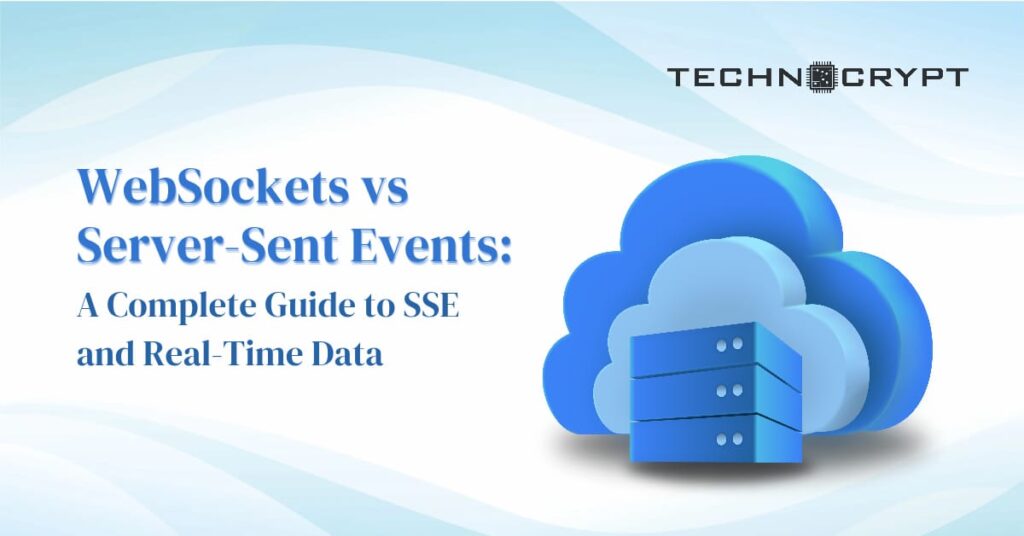Understanding Web Development Frameworks
Behind every sleek website and powerful web application lies a system that makes it all work seamlessly. Web development frameworks have become essential tools in crafting the modern web, providing developers with the structure and resources they need to create robust, scalable, and visually stunning online experiences.
These frameworks are more than just tools—they’re great tools. They streamline the coding process, offer reusable components, and establish standardized best practices, ensuring that developers can focus on solving complex problems instead of dealing with repetitive tasks. From designing interactive user interfaces with frameworks like React or Angular to managing data and servers using Django or Express.js, web development frameworks make building complex projects faster and more efficient.
Frontend, Backend, and Full-Stack Frameworks
Front-End Frameworks: Enhancing UI/UX
Front-end frameworks provide the structure for creating dynamic, responsive, and interactive user interfaces. They allow developers to manage the visual and interactive elements of a web application, focusing on user experience. Popular frameworks include:
- React: Known for its component-based architecture, React allows for reusable components, making UI manipulation efficient.
- Angular: Offers a comprehensive structure for building single-page applications with powerful data binding.
- Vue.js: Lightweight and versatile, Vue is well-suited for creating both simple and complex UIs.
These frameworks are client-side-oriented, managing user interactions directly on the client side for a seamless experience.
Back-End Frameworks: Managing Server-Side Operations
Server-side frameworks handle the backend logic, including database interactions, user authentication, and complex computations. Key frameworks include:
- Node.js: Enables JavaScript-based server-side development, known for its scalability and efficiency.
- Django: A Python framework that promotes security and rapid development, popular for handling complex back-end tasks.
- Ruby on Rails: Simplifies database-backed web applications with a focus on convention over configuration.
These frameworks help developers manage data securely and efficiently while performing the necessary server operations for an application.
Full-Stack Frameworks: The All-in-One Solution
Full-stack frameworks provide tools for both front-end and back-end development, making them suitable for building complete applications from scratch. Examples include:
- Meteor.js: A JavaScript framework that provides a real-time, full-stack solution, supporting both client-side and server-side tasks.
- Laravel: A PHP-based framework that includes robust tools for handling back-end tasks, along with some front-end features.
With full-stack frameworks, developers can create end-to-end applications, streamlining development by consolidating client-side and server-side processes into a single framework.
Top Rated Web Development Frameworks
1. React (Frontend)
- Overview: Developed by Facebook, React is a JavaScript library primarily focused on building user interfaces, especially single-page applications.
- Strengths: Known for its high efficiency in rendering, React uses a virtual DOM to optimize updates, which makes it highly responsive and well-suited for complex UIs. It’s component-based, allowing developers to build encapsulated UI elements that can be reused across applications.
- Why Popular: React’s flexibility makes it easy to integrate with other libraries and frameworks, and its extensive ecosystem offers a wide variety of tools and extensions.
2. Angular (Frontend)
- Overview: Maintained by Google, Angular is a full-fledged front-end framework that provides a powerful suite of tools for building rich, single-page applications.
- Strengths: Angular’s two-way data binding keeps the model and the view in sync, reducing boilerplate code and enhancing interactivity. The framework’s extensive features—like dependency injection, RxJS for reactive programming, and built-in form handling—enable developers to handle complex applications.
- Why Popular: Angular’s comprehensive set of tools and well-structured framework make it a popular choice for enterprise applications that require strong, feature-rich front-end capabilities.

3. Vue.js (Frontend)
- Overview: Vue.js is a progressive JavaScript framework designed to be incrementally adaptable and easy to integrate with other libraries.
- Strengths: Vue’s simplicity and flexibility have led to its popularity, as it provides a gentle learning curve. It offers features from both React (component-based structure) and Angular (two-way data binding), making it versatile.
- Why Popular: Vue is highly popular for its ease of use and ability to integrate with existing projects, making it a preferred choice for developers seeking simplicity and speed without a steep learning curve.

4. Node.js (Backend)
- Overview: Node.js is a JavaScript runtime built on Google Chrome’s V8 engine, allowing developers to use JavaScript for server-side programming.
- Strengths: Its non-blocking, event-driven architecture makes it highly efficient for real-time applications and handling multiple concurrent requests. Node.js is often used in applications requiring high I/O operations, like chat applications, streaming, and APIs.
- Why Popular: Node.js has a vast package ecosystem (NPM) and benefits from JavaScript’s popularity, making it a strong choice for full-stack JavaScript development. It’s known for scalability and quick performance.

5. Django (Backend)
- Overview: Django is a high-level Python web framework that promotes rapid development and clean, pragmatic design.
- Strengths: Django’s “batteries-included” philosophy provides built-in tools for many common web development tasks, from authentication to form handling. It follows a Model-View-Template (MVT) architecture and emphasizes security.
- Why Popular: Django’s robustness and the ability to quickly develop scalable applications make it ideal for data-driven, large-scale applications and APIs.
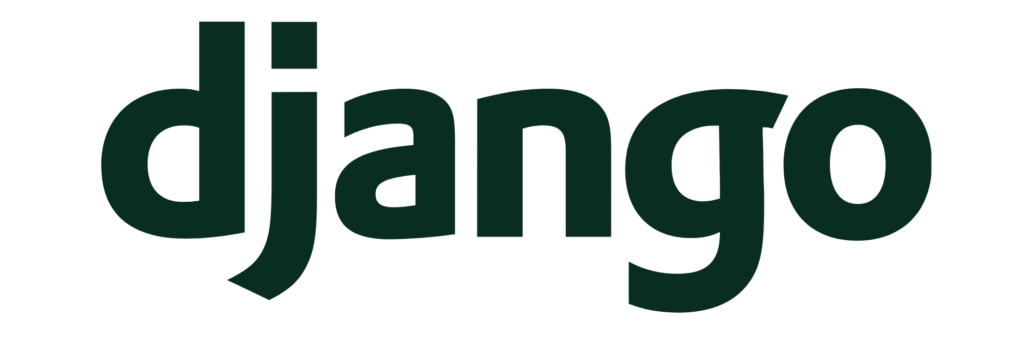
6. Laravel (Full-Stack)
- Overview: Laravel is a full-stack PHP framework built with a focus on simplicity and ease of use.
- Strengths: Laravel’s clean syntax, Blade templating engine, and built-in tools for routing, authentication, and database management make it a favorite for PHP developers. It is especially popular for managing complex back-end functionalities in web applications.
- Why Popular: Laravel provides a strong developer experience with a wide range of tools and a clean API, making it one of the easiest PHP frameworks to learn and work with for web application development.

Each of these frameworks provides unique benefits and caters to different development needs, from front-end interactivity to back-end logic and full-stack solutions. Their robust communities, ease of integration, and performance optimizations make them among the most widely adopted frameworks in modern web development.
Choosing the Right Framework for Your Project
Choosing the right framework for web development hinges on several factors, including project complexity, scalability requirements, team expertise, and long-term maintenance. Each project’s unique demands often guide the choice of framework. For instance, Django is ideal for data-intensive applications due to its robust ORM (Object-Relational Mapping) system, which simplifies database interactions. On the other hand, applications that require quick scalability to handle surges in traffic or requests may benefit from Node.js, known for its non-blocking, event-driven architecture that efficiently manages high I/O operations.
To select a suitable framework, several key points should be assessed:
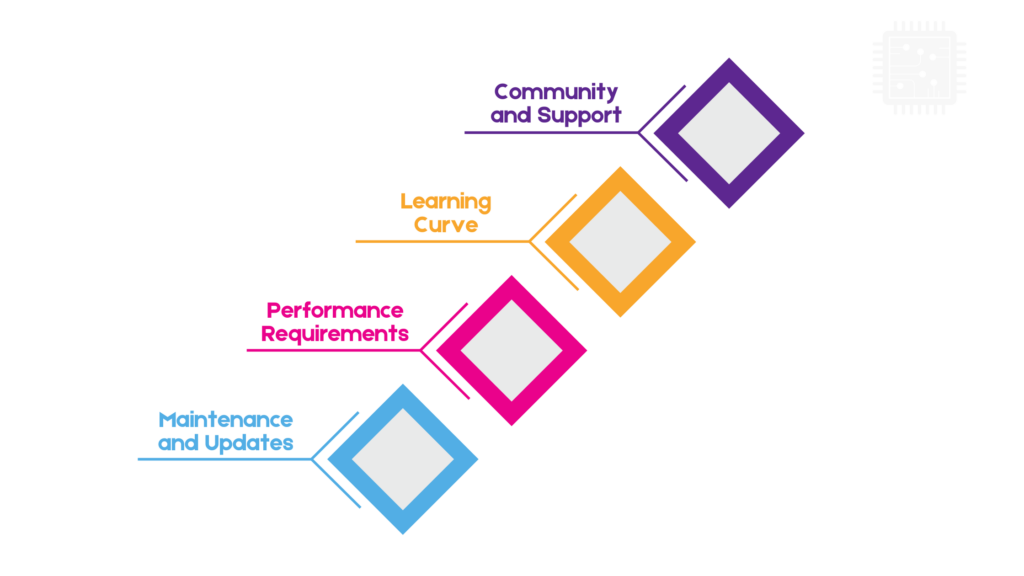
- Community and Support: A strong community provides valuable resources such as tutorials, plugins, and libraries that accelerate the learning curve and simplify problem-solving. A well-supported framework with extensive documentation is especially advantageous for developers new to it.
- Learning Curve: Consider the ease of learning the framework, particularly if onboarding new team members or using it for the first time. Frameworks like Vue.js are known for their simplicity and adaptability, making them excellent choices for new developers.
- Performance Requirements: The framework should be capable of handling the expected traffic and data load. For example, high-traffic applications benefit from frameworks with optimized data-handling capabilities and caching support to maintain speed and responsiveness.
- Maintenance and Updates: The longevity and maintenance needs of a project matter; frameworks with a strong update cycle and active community support ensure long-term reliability and performance.
Taking these factors into account helps identify the framework that best aligns with your project’s needs, making for a more streamlined development experience and ensuring that the application meets its performance and scalability goals.
Main Ideas of Web Development Frameworks
Web development frameworks simplify development by organizing key processes into manageable components, particularly through routing, template engines, and database integration.
- Routing: Frameworks handle URL requests by mapping them to specific functions within the application, allowing developers to define clear routes for each page or resource. This effective routing system enables users to find the desired content effortlessly, resulting in a seamless experience as they navigate the website.
- Template Engines: With template engines like those found in Django or Laravel, developers can create dynamic content that blends server-side data with static HTML. These engines generate complete, rendered web pages, providing a flexible way to display personalized or data-driven content.
- Database Integration: Most backend frameworks come with built-in support for databases, which simplifies data handling. Using an Object-Relational Mapping (ORM) system, frameworks let developers interact with the database in a more abstracted way, making operations like CRUD (Create, Read, Update, Delete) straightforward and reducing the need for complex SQL queries. This integration is essential for applications that require efficient data management and real-time updates.
Each of these elements enhances productivity, allowing developers to focus more on unique application features rather than repetitive backend tasks.
Middleware, Authentication, and Error Handling
Features that enhance functionality and security in web development frameworks include middleware, authentication and authorization, and error handling.
- Middleware: Middleware functions can modify incoming requests before they reach the main handler or adjust responses before they’re sent back to the user. These functions are essential for tasks like authentication, data logging, or transforming requests, adding an extra layer of control and security to the application’s flow.
- Authentication and Authorization: Controlling access to parts of an application is crucial for security. Frameworks like Django offer built-in authentication systems, while other frameworks may rely on external libraries to implement seamless access control, ensuring only authorized users access specific resources.
- Error Handling: Effective error handling is essential in any framework, allowing developers to catch runtime issues and manage them gracefully to avoid disruptions for the user. This feature ensures a smooth user experience by handling unexpected events efficiently.
These features make frameworks robust, ensuring applications are functional, secure, and resilient to unexpected issues.
RESTful API Development and Testing
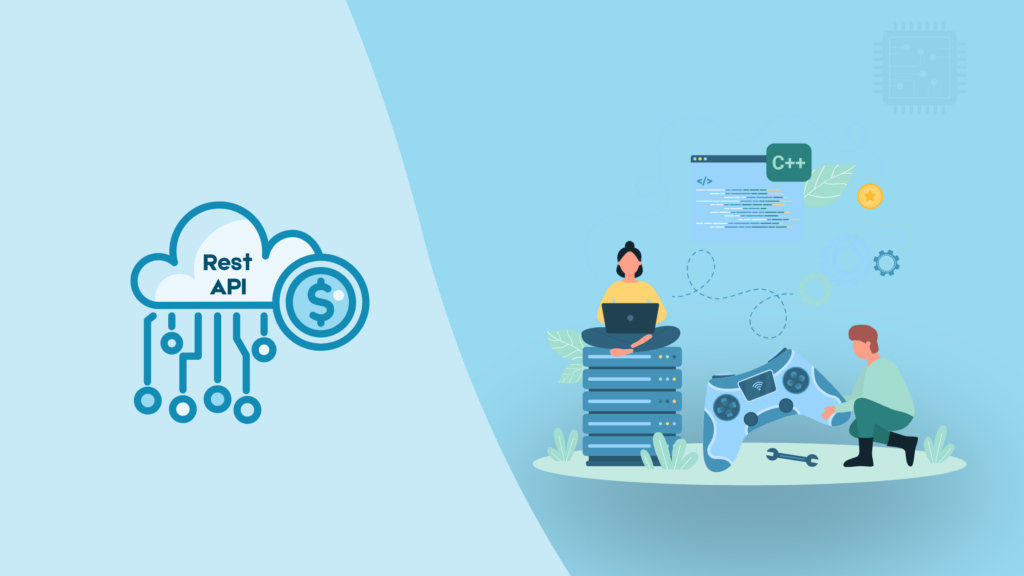
In modern web application development, APIs (Application Programming Interfaces) have become an essential component for facilitating communication between different systems. They enable various software components to interact and share data seamlessly, making applications more flexible, scalable, and interoperable. This is particularly important in today’s landscape where applications often rely on microservices, third-party integrations, and cloud services. Leading backend frameworks, such as Node.js and Django, come equipped with built-in tools that simplify the process of building RESTful APIs. These frameworks provide robust support for key functionalities, including routing—which maps specific URLs to application functionalities—request validation to ensure incoming data is formatted correctly, and response formatting to structure the output data in a way that clients can easily consume.
In addition to API development, testing is another critical aspect of modern web development that cannot be overlooked. Ensuring that applications are built without bugs is vital for maintaining user trust and satisfaction. Most contemporary frameworks incorporate in-built testing libraries that streamline the testing process. For instance, Jest is widely used in the Node.js ecosystem, providing a user-friendly interface for writing unit tests and performing assertions. Similarly, PyTest for Django offers powerful testing capabilities, allowing developers to create test cases that cover various parts of their applications. By utilizing these testing frameworks, developers can run automated tests throughout the development lifecycle, significantly reducing the chances of bugs making their way into production environments. This proactive approach not only enhances the overall quality of the application but also saves time and resources in the long run, as issues can be identified and resolved earlier in the development process.
Optimization and Best Practices on Performance
Many features are inherent in web development frameworks, and one of the most critical among them is performance optimization. This aspect of framework design incorporates various strategies and techniques aimed at improving the speed and efficiency of web applications, ensuring they provide a smooth user experience. Key features that contribute to performance optimization include caching, lazy loading, and code compression. Implementing these functions effectively is essential for ensuring that pages load in under a second, which is vital for user satisfaction and engagement.
Key Optimization Techniques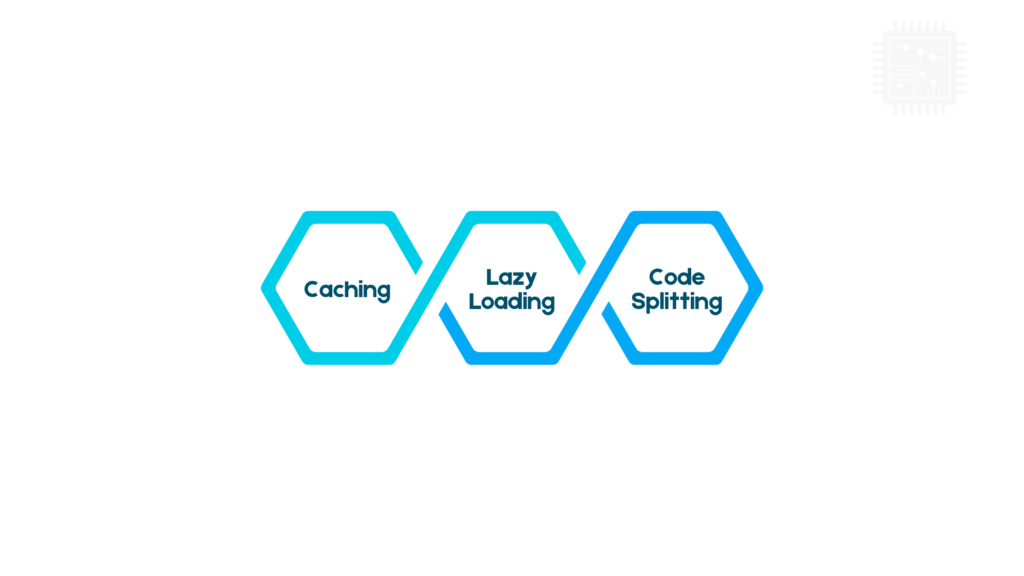
- Caching: This technique involves storing frequently accessed data in a temporary storage area, allowing for faster retrieval during subsequent requests. By caching responses to commonly requested resources, applications can significantly reduce server load and decrease response times, leading to an overall more efficient application.
- Lazy Loading: Lazy loading is a strategy where components or assets are loaded on demand, rather than all at once during the initial page load. This approach can greatly enhance performance, especially for applications with heavy content, as it ensures that only the elements currently in view or needed for immediate interaction are loaded. As users scroll or navigate, additional resources are fetched as needed, improving initial load times.
- Code Splitting: This technique involves breaking large JavaScript files into smaller, more manageable chunks. By splitting code into smaller pieces, only the necessary parts of the application are downloaded when needed, rather than sending the entire codebase at once. This can lead to faster load times and improved performance, particularly for single-page applications.
In addition to these techniques, adhering to best coding practices is crucial. Minimizing the number of HTTP requests made by the application helps to streamline the communication between the client and server, reducing overhead. Utilizing Content Delivery Networks (CDNs) further enhances performance by distributing content closer to users, thereby decreasing latency and load times. By implementing these strategies, developers can ensure their web applications are not only functional but also optimized for performance, delivering a responsive and enjoyable user experience.
Conclusion
Web development frameworks are great starting points for building the web applications of today. Whether it is front-end or back-end or full-stack development, knowing what each framework can do and how you can take advantage of that would really get your project flying. Thereby, you can choose the right framework for your project only if you know the real needs of your project. It will help you in developing easily, achieving architectural scalability, and get a high-performance result. So, dive into that world, become a member of communities where the resources can be verified and follow the best practices when it comes to web development frameworks.




